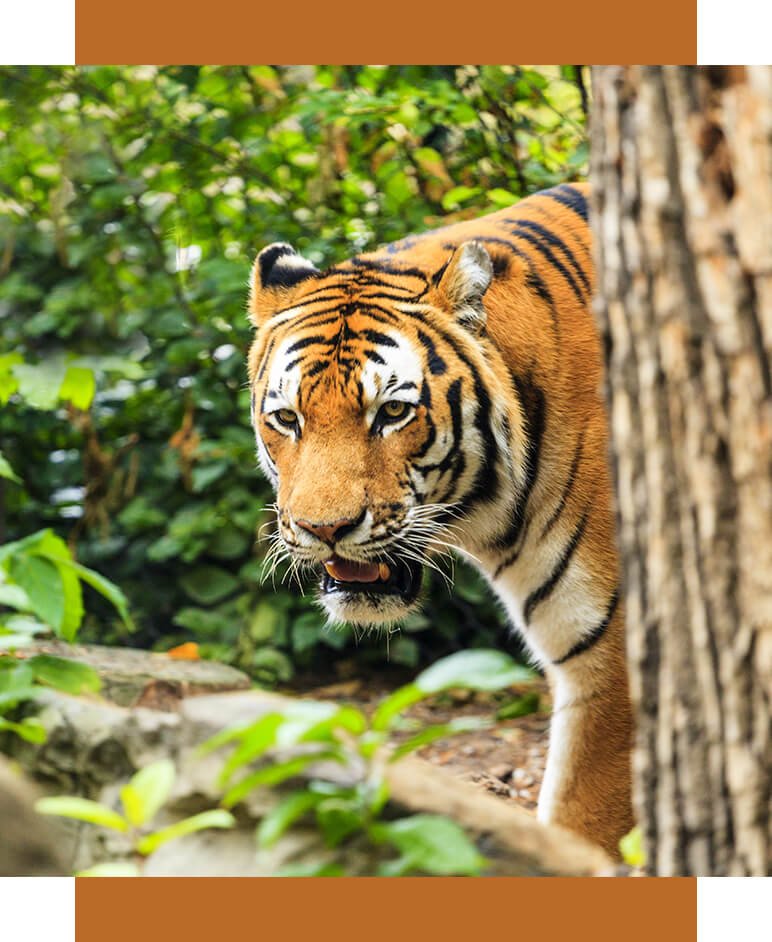Tigers for sale in Asia? Yes, it's possible.
My name is Anna Wasilewska and I created the Orientana brand. My brand is based on Asian ingredients. Maybe you've heard of it? These are natural cosmetics. The idea for the brand and the ingredients come from Asia. I spent a lot of time there.
Since the beginning of my travels around Asia, I have most enjoyed going to places where I could peacefully admire Asian nature and see Asian animals in the wild. I have seen orangutans, elephants, tapirs, various birds and insects, but I have never managed to see a tiger, although the tiger is a typical inhabitant of Asia - Asia is its homeland. The largest wild population lives in India, and in some states of India tigers are considered sacred animals.
Just 150 years ago, there were quite a few of them in Asia – apart from India, the tiger lived in Bangladesh, Indonesia, Malaysia and Thailand. Unfortunately, today there are fewer than 4,000 tigers in the wild. That's 3% of the population that once inhabited these areas. Of the 9 subspecies of tiger, only 5 survived until 2020. Read that again – fewer than 4,000 tigers survived until the 21st century! And according to experts, we only have 10 years to save this species from complete extinction.
TIGERS FOR SALE - HUNTING
Before we realized that the tiger population was decreasing, it was an animal that was killed for sport. Trips to Asia to take part in hunting were popular. Today, it is illegal to hunt tigers, but this ban was introduced too late, in 1971, and there are still no effective ways to limit poaching. And it was not until 1986 that the tiger was recognized as an endangered species.
The sad truth is that we all contribute to the drastic reduction of the tiger population to some extent. The main reason for this is the predatory economy of large producers - cutting down forests and converting them into agricultural fields or factories, which causes its extinction. For example, in Sumatra, where the jungle is cut down to grow palm trees for the production of palm oil (check if you have products with this ingredient at home!) the tiger population has fallen drastically and is no longer reproducible.
Poaching is still a significant threat. Did you know that there are still people in the world who want a tiger skin on their living room floor or a tiger fang on their desk? The skin of a Bengal tiger, the most beautiful one, reaches a dizzying price of 60 thousand euros on the black market and there are still people interested. Horrible, right?
TIGERS FOR SALE - NATURAL MEDICINE
The use of powdered tiger bones in natural medicine is still a significant threat. Although the World Federation of Chinese Medicine Associations has widely reported that there is no evidence of the effectiveness of tiger preparations, the belief in its power is still great. And despite the fact that in 1993 the Chinese government banned the use of tiger preparations, it recently overturned this decision. The Chinese authorities decided that tiger bones can be used as long as they come from a farmed tiger. However, it is difficult to monitor the origin of a tiger, and we know that there are organized gangs that kill animals in the wild and smuggle tiger body parts to drug manufacturers. Do you remember the story about the tigers saved by the Poznań Zoo? Today we know that these tigers were riding to certain death. They were farmed tigers, and the recipient was waiting for their bones.
TIGERS FOR SALE - SANCTUARIES FOR TOURISTS
You can read about the dark side of Asian tourism, which treats wild animals, including tigers, as objects in my previous post. Tigers are kept in so-called "shelters" where tourists can take pictures with them. They live as slaves of the tourism industry - previously taken from their mothers, kept in scandalous conditions, stuffed with sedatives and released to tourists, who smile and take selfies with them and then post them on social media. So many people do not know that they contribute to the extinction of tigers with a single photo.
That's why I really liked Instagram's campaign. Instagram announced that it is adding content warnings to selfies that include wild animals, such as tigers. The English hashtag "tiger selfie" is monitored by Instagram, and when you search for it, an educational message appears about what such a selfie really means. Usually, a warning appears that says: "You are looking for a hashtag that may be associated with posts that encourage harmful behavior towards animals or the natural environment." Tinder is also carrying out a similar campaign because it turns out that selfies with wild animals are quite fashionable on Tinder.
Tinder and Instagram are not currently removing selfies, but Instagram has begun removing images that depict animal abuse or the sale of endangered animals and is working with organizations including the World Wildlife Fund (WWF) and TRAFFIC on enforcement.
It is sad how we humans do not respect nature, how we exploit it and how we have taken over the lives of animals. Not only in Asia.






